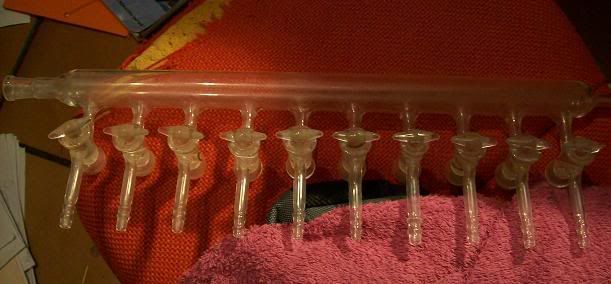
| Quote: |

 I purchased a 40 cubic foot cylinder and a
pressure regulator. So now I am set up for some syntheses heretofore out of reach.
I purchased a 40 cubic foot cylinder and a
pressure regulator. So now I am set up for some syntheses heretofore out of reach.
 They come with taps or without. You need the ones
with taps if you intend on evacuating your setup befotre introducing the argon, which is the best way to proceed to eliminate any atmospheric O2 or
H2O: evacuate your setup for 30-60s (or until your solvent, if you have one in there, starts to boil), then clsoe vacuum, open argon inlet until setup
is slightly overpresurized, and repeat the evacuation/refill a few times.
They come with taps or without. You need the ones
with taps if you intend on evacuating your setup befotre introducing the argon, which is the best way to proceed to eliminate any atmospheric O2 or
H2O: evacuate your setup for 30-60s (or until your solvent, if you have one in there, starts to boil), then clsoe vacuum, open argon inlet until setup
is slightly overpresurized, and repeat the evacuation/refill a few times.
| Quote: |

| Quote: |

| Quote: |

| Quote: |

| Quote: |
| Quote: |

| Quote: |